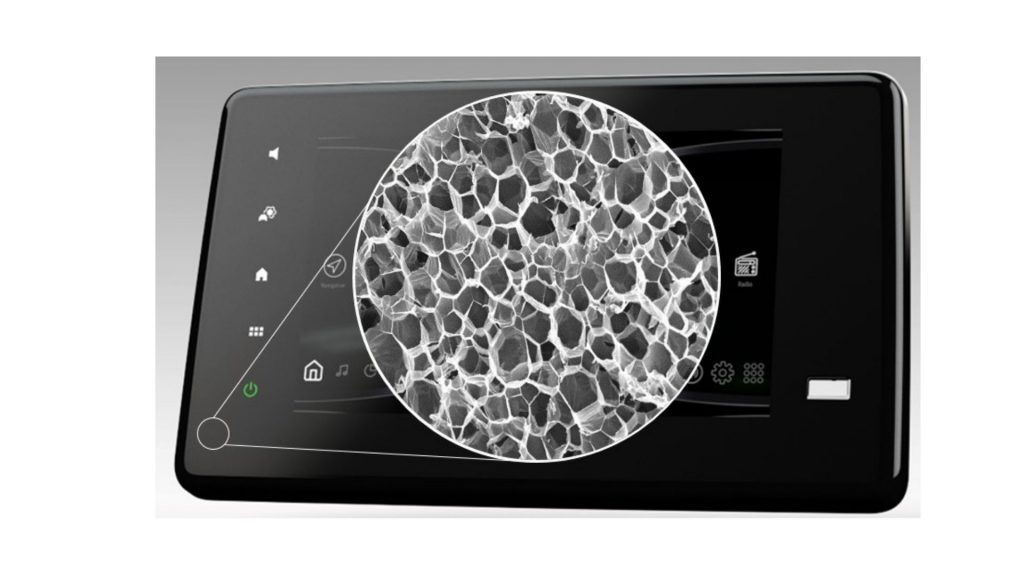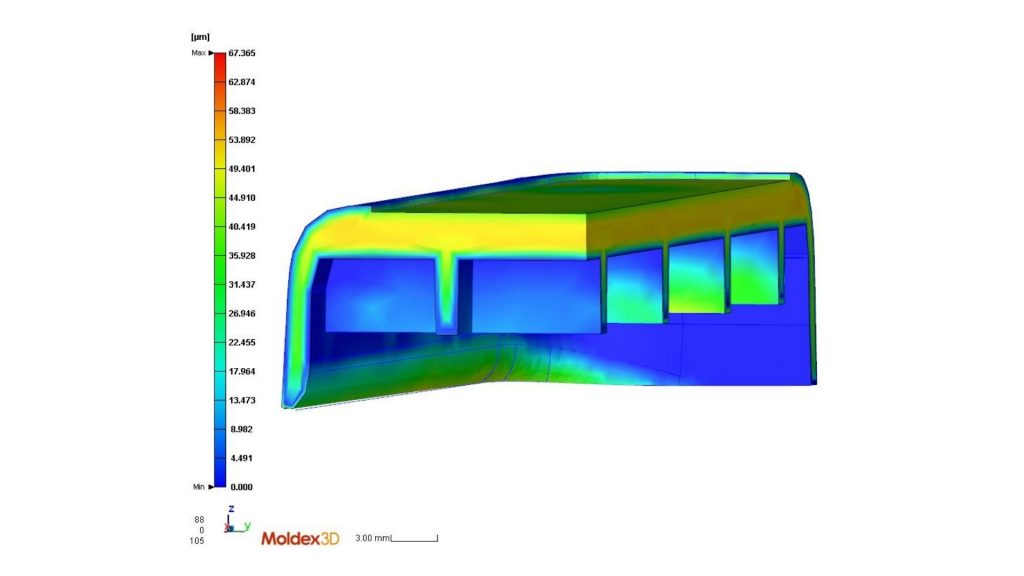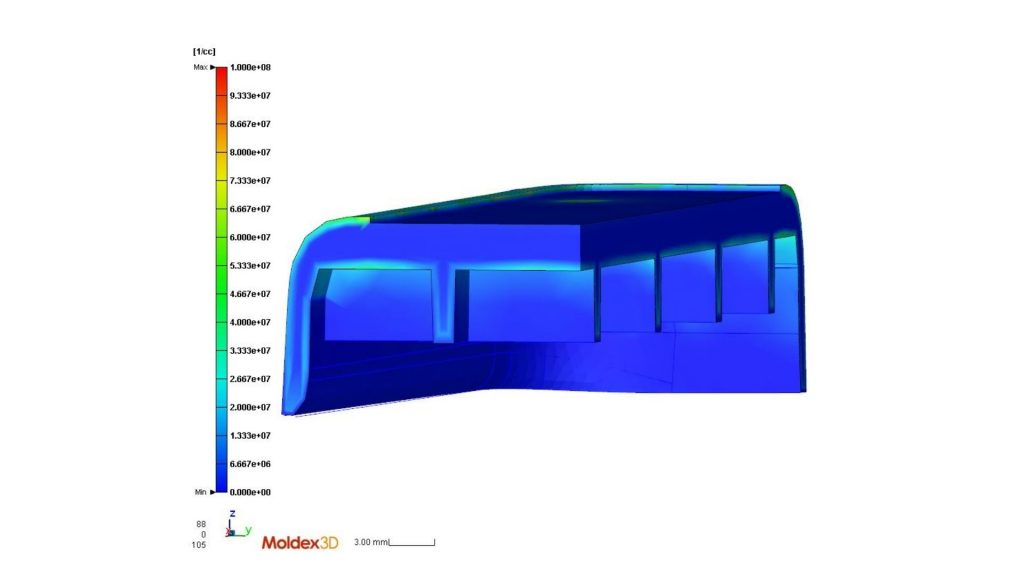
In recent years, the integrated moulding of components has been attracting growing interest from the major manufacturers in the plastics industry. With the integration of processes, it is possible, in a single production step, to produce components without the need for post-processing or intermediate steps and, consequently, reduce production times, also allowing to increase energy efficiency, reduce waste, resulting in a process more sustainable, with a reduction in associated costs.
Within the scope of the Bosch Suppliers Club, the I&DPIIMIO project main objective is to obtain integrated solutions for the production of components for the automotive industry, based on two pillars of innovation: the integration of processes in a single step, combining the integration of In-Mould Electronics (IME) technologies, over-injection and the use of microcellular injection technology (MuCell). In Figure 1, there is a representation of the geometry of the component under study.

Figure 1 – Integrated moulding of lightweight components for the automotive industry.
The consortium is constituted by GLN Plast, the lead promoter, the Centre for Innovation in Polymer Engineering (PIEP), GLN Molds, the University of Minho, and the Center for Nanotechnology and Technical, Functional and Intelligent Materials (CeNTI).
Microcellular injection emerges as a solution for the production of components with reduced weight, as it allows the creation of components with a cellular structure (created by the expansion of the gas introduced during the injection process), thus reducing the amount of material necessary for the process. The cell expansion phase enables a significant reduction in cycle time, as it is possible to reduce the time required for the compaction phase and reduce the required closing force. The gas, introduced in its supercritical phase, further reduces the viscosity of the material to be injected, facilitating the use of higher injection speeds, further reducing cycle time. In this way, it is possible to greatly reduce the cycle time required for the production of a component (15 – 40%).
Although the technology has been around since the 1980s, it is only beginning to gain a greater impact on the market, justified by a lack of initial interest, due in large part to the associated acquisition costs and the reduction of mechanical properties in the components produced. However, from a controlled process, it is possible to obtain parts with uniform cellular structures, allowing to control the degree of loss of mechanical properties and guaranteeing the integrity part by part. Thus, from the combination of microcellular injection with different technologies, it is possible to obtain components capable of meeting the requirements of the applications for which they were designed.
In the project, the development of the component is being supported by numerical simulations of the production process. In the first phase, this process allowed the definition of the most suitable type of gas for the production of the component under study. It was possible to predict the size and cell density throughout the entire piece, as shown in Figures 2 and 3. The results also made it possible to estimate the expected weight reduction for the component in question, with a maximum reduction of 13% relative to a part injected by the conventional injection moulding method. In addition, they allowed us to estimate a reduction in the cycle time of around 20%.
Figure 2 – Cross-sectional view of the cell density distribution of the component under study.

Figure 3 – Cross-sectional view of the cell size distribution of the component under study.
Thanks to microcellular injection, it was possible to improve the component’s dimensional tolerance, with a 35% reduction in warpage and suck marks on the part. In order to predict potential problems, numerical simulation was also used in order to respond in the mold concept design process, helping to idealize the production tool contemplating multi-component injection, capable of integrating the IME film and over-injection of parts in a single process. Finally, it should be noted that the final component includes the incorporation of an anti-scratch and anti-reflective coating, which will ensure the functionality of the product under development.
Acknowledgment
Work carried out under the project I&DPIIMIO – R&D of Processes for Integrated Injection POCI-01-0247-FEDER-042832, financed by the European Regional Development Fund (ERDF) through the Compete 2020 Operational Program.

Authors:



Diana Dias, Research Engineer of the Advanced Manufacturing Processes – Polymers area of PIEP;
Rita Marques, Project Manager of the Advanced Manufacturing Processes – Polymers area of PIEP;
Sílvia Cruz, Coordinator of the Advanced Manufacturing Processes – Polymers area of PIEP;
Pedro Costa, R&D Project Manager;
Miguel João, GLN Technical Responsible.
Article originally published in InterPLAST magazine.
Know more about the Advanced Manufacturing Processes – Polymers area of PIEP.


